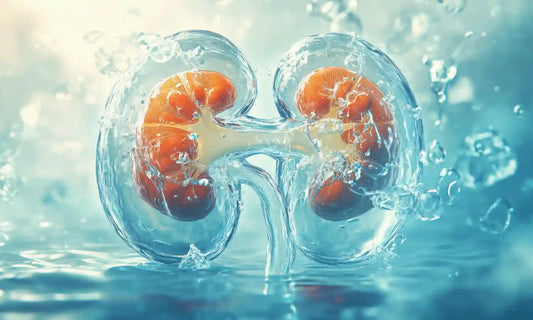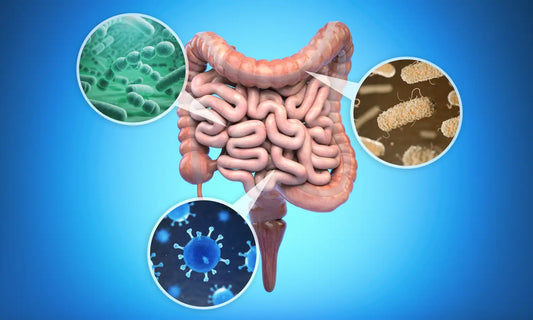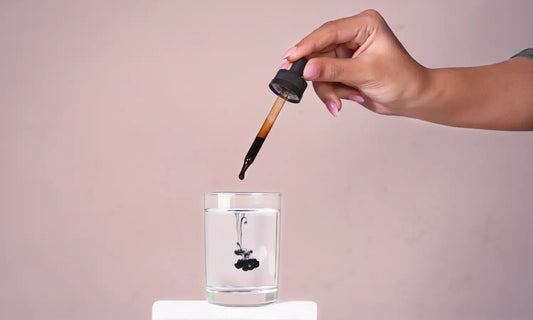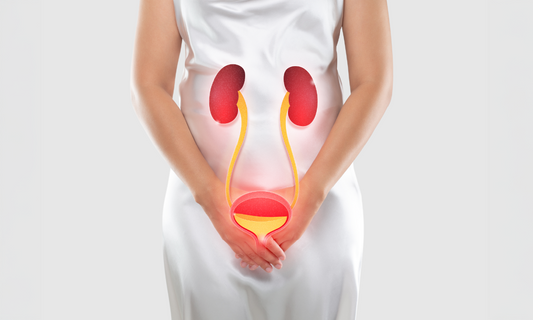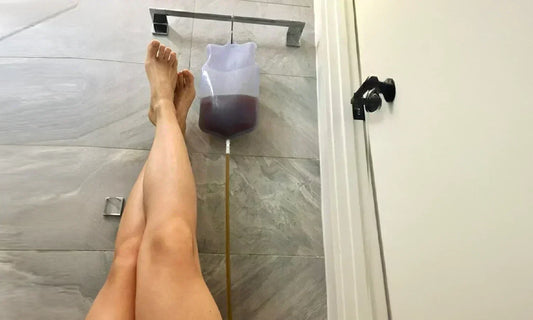Have you ever found yourself staring at your underwear, wondering if that discharge indicates your period is coming or if you might be pregnant? You're definitely not alone in this guessing game! Many women experience the same dilemma, especially when trying to conceive or actively avoiding pregnancy.
Understanding the difference between discharge before your period and early pregnancy can help you decode what your body is telling you and make informed decisions about your reproductive health. But first, let's understand what vaginal discharge is.
Vaginal discharge isn't something most of us learned about in health class, right? But it's totally normal and actually super important for your health.
Vaginal discharge, medically known as leukorrhea, is a fluid that normally comes out of your vagina and includes fluids produced by the vagina itself, the cervix, and sometimes even the uterus. It is produced throughout the day and serves a crucial function.
It acts as a protective barrier, preventing sperm, old, worn-out dead cells, infections, and other substances from entering the female reproductive system. It keeps your genital system clean, and healthy.
It changes throughout your menstrual cycle in terms of amount, color, and texture, thanks to those crazy hormone fluctuations doing their thing.
typically appears clear or milky white, has a mild odor, and doesn't cause itching or burning. Depending on where you are in your cycle, its consistency keeps changing and can range from thin and watery to thick and sticky.
After the onset of puberty, as much as one teaspoon of fluid may be produced each day.
I bet you never thought how much it contributed to your reproductive health, but here is the catch: to work optimally, it must keep changing its characteristics during different timings of your menstrual cycle. Let's discuss the features of premenstrual discharge first.
Pre-Period Discharge: What to Expect
Characteristics of Pre-Menstrual Discharge
Before your period arrives, you'll typically notice specific changes in your vaginal discharge. During the two weeks before menstruation, called the luteal phase of the cycle, progesterone levels rise, causing discharge to become thicker and more opaque.
Pre-period discharge often appears:
This thick discharge created due to progesterone hormone dominance that usually happens during this time acts as a barrier and blocks the sperm from reaching the egg when you're not in your fertile window. Pretty clever, right?
So, you know what to look for – but do you know when exactly this happens?
Timeline of Pre-Period Discharge
You'll usually notice these discharge changes happening about 10 to 14 days after you ovulate. As your period gets closer, the discharge might become slightly more abundant before it tapers off right before the main menstruation begins.
Fun Fact: The consistency of pre-period discharge is nature's way of creating a protective barrier in your reproductive tract when pregnancy is less likely to occur. Like your body putting up a "closed for business" sign in your reproductive tract!
And, of course, your discharge won't appear alone; there will be a whole lot of accompanying symptoms.
Other common PMS signs that you might notice
Bloating, breast tenderness, mood swings, and mild cramping are common premenstrual symptoms.
But what happens when there's a baby on board instead?
Early Pregnancy Discharge: Key Differences
What Makes Pregnancy Discharge Unique
Okay, so let's say a little sperm made it past the mucus barrier, and fertilization happened. Your body immediately starts producing human chorionic gonadotropin (hCG), the pregnancy hormone. This hormonal shift creates distinct changes in vaginal discharge that differ from typical pre-period symptoms.
Early pregnancy discharge typically features:
If your discharge shows the above features and you're trying to get pregnant, this could be an alert sign to take a home pregnancy test for a clearer picture.
Disclaimer: Everyone's discharge can vary and the presence of this discharge quality does NOT necessarily indicate pregnancy.
Knowing what pregnancy discharge looks like is one thing, but timing is everything, especially when you're trying to get pregnant.
When Pregnancy Discharge Appears
Pregnancy-related discharge changes can begin as early as one to two weeks after conception. That's often before you even miss your period! This timing coincides with implantation when the fertilized egg attaches to the uterine wall.
Myth Buster: Discharge Color Myths
Many online sources claim that yellow or brown discharge always indicates infection or problems. However, slight color variations are normal. Light yellow discharge can occur due to regular hormonal changes, while brown discharge is usually just old blood from previous cycles. Your body is just being thorough with the cleanup!
Note: Always speak to your doctor to get a proper evaluation if you are ever concerned about your discharge
Side-by-Side Comparison: Period vs. Pregnancy Discharge
|
|
|
|
|
|
Moderate increase, thick and creamy
|
Noticeable increase, thin to moderate thickness
|
|
|
White to off-white, opaque
|
Clear to milky white, often more transparent
|
|
|
A few days before the period
|
It can last for weeks or months
|
|
|
Should not include any symptoms, however many women suffer from PMS symptoms like , mood changes, breast tenderness
|
Can be asymptomatic or can be a heightened sense of smell
|
So, if you're picking up on something different, your instincts might be spot-on!
Other Early Pregnancy Signs to Watch For
Physical Symptoms
Beyond discharge changes, early pregnancy may present additional signs:
Hormonal Changes
The rapid increase in pregnancy hormones can cause various symptoms within the first few weeks of conception. Hormonal fluctuations begin just 6-12 days after fertilization. Your body doesn't waste any time!
When to Take a Pregnancy Test
Optimal Testing Timeline
I know waiting sucks, but for the most accurate results, try to hold off on home pregnancy testing until after you've missed your period. I get it – when you think you might be pregnant, every day feels like a year! However, some sensitive tests can pick up pregnancy hormones as early as 10 to 14 days after conception.
Understanding Test Accuracy
Home pregnancy tests are remarkably accurate these days. They detect hCG levels in urine. According to the New England Journal of Medicine, they're about 99% accurate when you use them correctly after missing your period. Just make sure you're reading the instructions – I know, I know, nobody likes reading instructions, but it's worth it!
Red Flags: When to Contact Your Healthcare Provider
Concerning Discharge Symptoms
While discharge changes are normal, certain specific symptoms warrant medical attention:
Additional Warning Signs
Don't mess around. In fact, contact your healthcare provider if you've got:
Managing Discharge Changes Naturally
Healthy Hygiene Practices
Maintain vaginal health by:
Fun fact: The vagina (the inner canal) is self-cleaning, but the vulva — which includes the outer parts like the labia, clitoris, and vaginal opening — needs a little gentle cleaning to stay healthy and irritation-free.
Supporting Your Overall Health:
Let's wrap this up with the key points you'll want to remember the next time you're staring at your underwear, wondering what's up.
Key Takeaways
-
shows distinct differences in volume, consistency, and timing. But the only way to get clarity is through a pregnancy test.
-
Pre-period discharge is typically thicker and white and does not cause discomfort, while pregnancy discharge is often thinner.
-
Take a pregnancy test after your missed period or if you are experiencing other pregnancy symptoms for the most accurate results (best way to know if you're pregnant).
-
Do you notice any changes in the color, odor, or consistency of your discharge? Are there any concomitant symptoms like itching or pain that raise suspicion? Contact a healthcare professional today!
Understanding your body's signals helps you to make informed choices about your reproductive health. Whether you're hoping for a positive pregnancy test or simply want to better understand your cycle, paying attention to these patterns can provide valuable insights into what's happening.
Ready to take control of your reproductive health journey? Start tracking your discharge patterns along with other cycle symptoms. And remember – your healthcare provider is there to help, so don't be shy about asking questions!
Disclaimer: The statements on this website have not been evaluated by the FDA. This information is not intended to diagnose, treat, cure, or prevent any disease. Always consult with your healthcare provider for personalized medical advice.
References
-
Early pregnancy discharge: What to expect. (2020). Available at: https://www.medicalnewstoday.com/articles/what-does-early-pregnancy-discharge-look-like (Accessed May 28, 2025)
-
Vaginal discharge during pregnancy: what's normal? (2015) Healthline. Available at: https://www.healthline.com/health/pregnancy/vaginal-discharge-during-pregnancy (Accessed May 28, 2025).
-
National Guideline Alliance (UK). Management of Symptomatic Vaginal Discharge in Pregnancy: Antenatal Care: Evidence Review T. London: National Institute for Health and Care Excellence (NICE); (2021). Available at: http://www.ncbi.nlm.nih.gov/books/NBK573944/.(Accessed May 28, 2025).
-
Marangoni A, Laghi L, Zagonari S, et al. (2021) New insights into vaginal environment during pregnancy. Available at: https://www.frontiersin.org/journals/molecular-biosciences/articles/10.3389/fmolb.2021.656844/full (Accessed May 28, 2025)
-
What kind of vaginal discharge during pregnancy is normal? What to Expect. Available at https://www.whattoexpect.com/pregnancy/symptoms-and-solutions/vaginal-discharge.aspx.( Accessed May 28, 2025).
-
Watson S. Pregnancy discharge: color and texture changes. WebMD. (No date b). Available at: https://www.webmd.com/women/features/pregnancy-discharge-changes (Accessed May 28, 2025).
-
Ecochard, R., Leiva, R., Bouchard, T., et al. (2021). "Cervical mucus patterns and the fertile window in women without known subfertility: a pooled analysis of three cohorts." Human Reproduction. Available at: https://pubmed.ncbi.nlm.nih.gov/33990841/ (Accessed May 28, 2025).
-
Lacroix G, Gouyer V, Gottrand F, Desseyn JL. (2020) The cervicovaginal mucus barrier. Int J Mol Sci. . Available at: https://pubmed.ncbi.nlm.nih.gov/33158227/ (Accessed May 28, 2025).
-
Cleveland Clinic. (2021). "Cervical Mucus: Chart, Stages, Tracking & Fertility." Women's Health Institute. Available at: https://my.clevelandclinic.org/health/body/21957-cervical-mucus (Accessed May 28, 2025).
-
What's the difference between vaginal discharge, arousal fluid, and cervical mucus? Flo.health - #1 mobile product for women's health. Avaialble at: https://flo.health/menstrual-cycle/health/vaginal-discharge/discharge-fluid-mucus. (Accessed May 28, 2025).



























